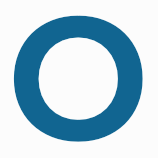OPEN SCIENCE
Critical Assessment of Open Science. An outcome from a Sage Bionetworks workshop, this is a set of contributions on the meaning of open science and what it comprises. The diversity of feedback showcases that open science is an umbrella term with different interpretations that elude a firm definition.
Kudos and DataCite have announced a partnership that offers permanent DOI identifiers to researchers for their research projects and programs. This increases the variety of research outputs that are provided as long-term, citable items.
PUBLISHING
What happens to the journal publishing if a major player sees their contract cancelled? In case of Germany, this The Scientist commentary by Diana Kwon argues that Wiley has made commercial inroads with their subscription/open access deal when Elsevier failed in the same market. This type of displacement activity may be the case, but whether Wiley’s model represents a long-term success scenario (also over fully open access options) remains the question. As Roger Schonfeld is quoted, “Does that mean that the deal that Wiley struck with Germany is one that it would be able to strike in every other country or every other university around the world? That’s a different story.”
In France, the Couperin Consortium representing 113 universities, 29 research organizations and more has failed to reach a deal to renew its subscriptions to journals of the American Chemical Society, and subscription access will be cut by April 1.
Research libraries from mainland China appear to be in broad support of the principles of Plan S, according to a statement by Xiaolin Zhang from the National Science Library, Chinese Academy of Sciences. The statement does not directly mention participation in Plan S, although of course these libraries are signatories of the OA2020 Initiative.
RESEARCH
The Worst Disease Ever Recorded. Ed Yong’s report in The Atlantic on the fungus Bd that has driven more species to extinction than any other pathogen. Original paper in Science.
The Chan Zuckerberg Biohub has built a tool to design and analyze CRISPR edits in batch. The tool can help large-scale efforts such as the insertion of fluorescent proteins into all 22,000 protein-coding genes in the human genome. To implement this on the technology side, the tool is building an API interface on top of two separate web site tools.
EVENTS
The AAAS Science and Human Rights Conference is taking place in Washington, DC, October 23-25, 2019.
OTHER
Citizen Science: Innovation in Open Science, Society and Policy. An open access book published by UCL Press (released in October 2018). From the book (ch. 1, p 8): “Citizen science has a role to play in both the open science and open access movements, and is in turn driven by them. The call for open-access research publication resonates with citizen science. Without it, members of the public who participate in research may well be deprived of the fruits of their participation, and without access to (other) research literature, citizens may not be equipped to conduct or analyse their own research.”
Academia.edu has raised $16M in series C funding. With this funding round led by Tencent Holdings, the company plans to use some of the investment on machine learning schemes to recommend published papers to researchers.
